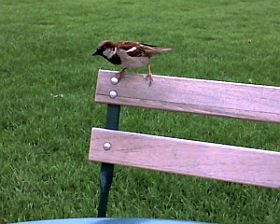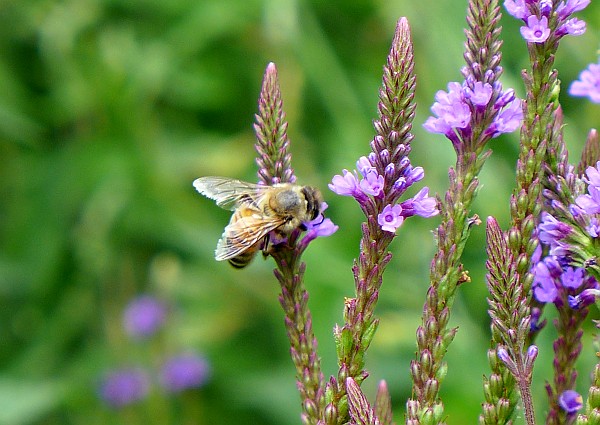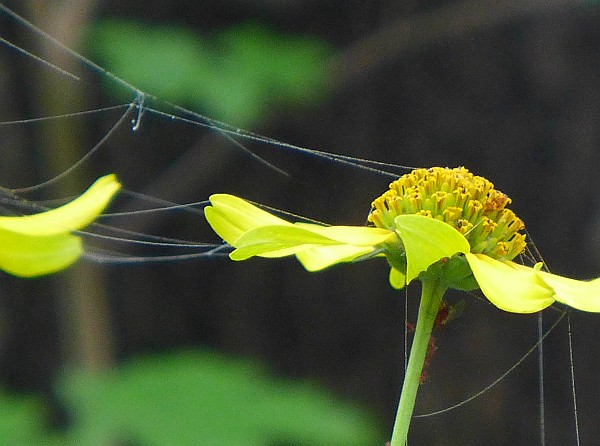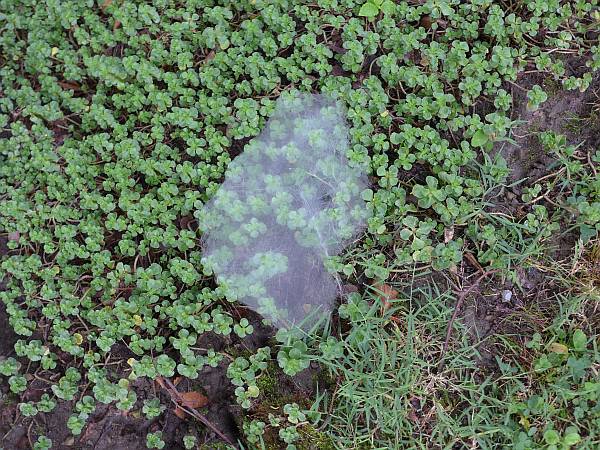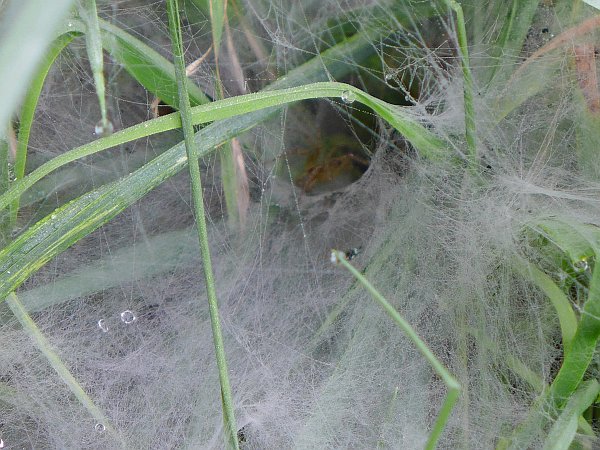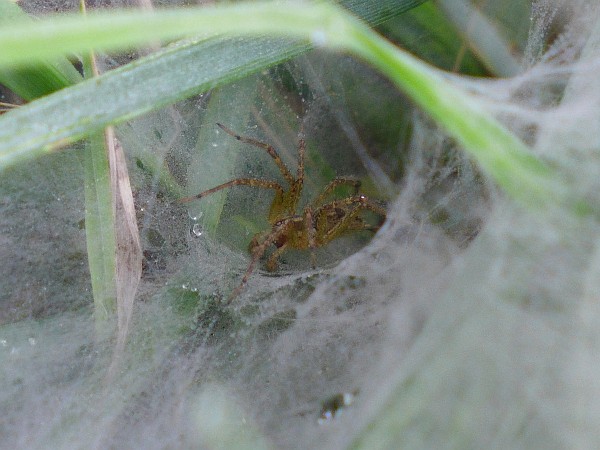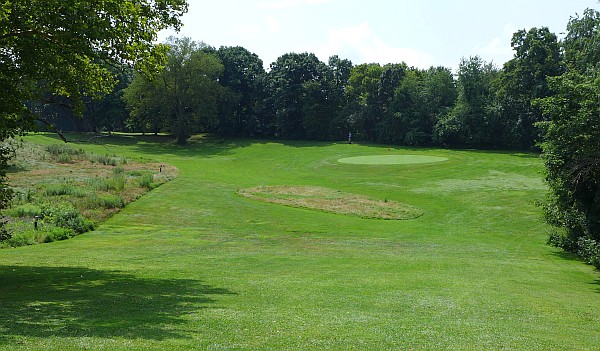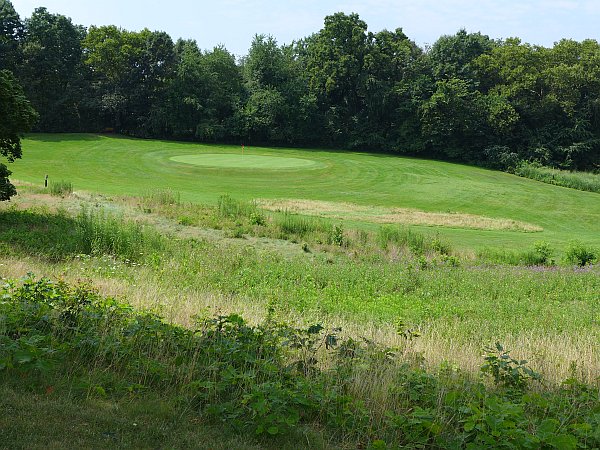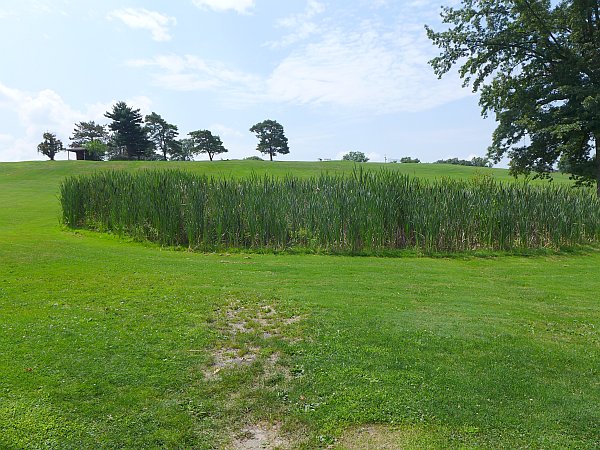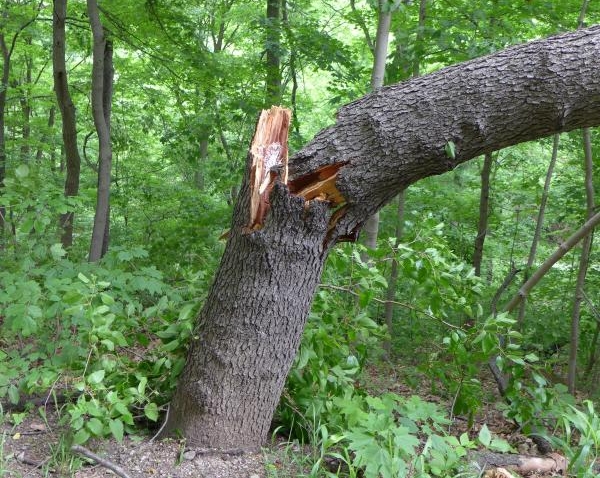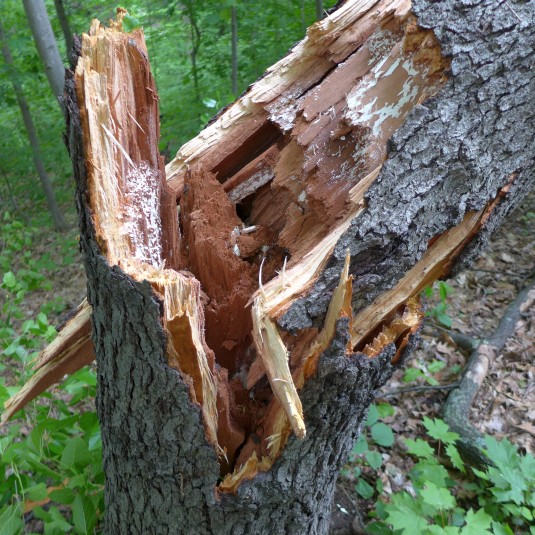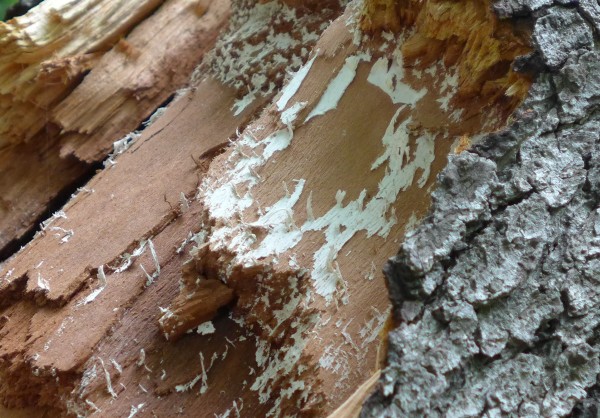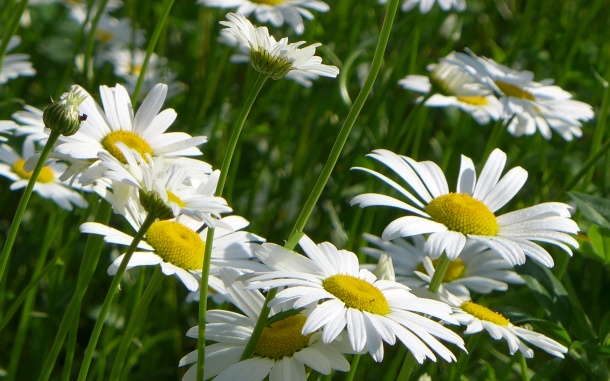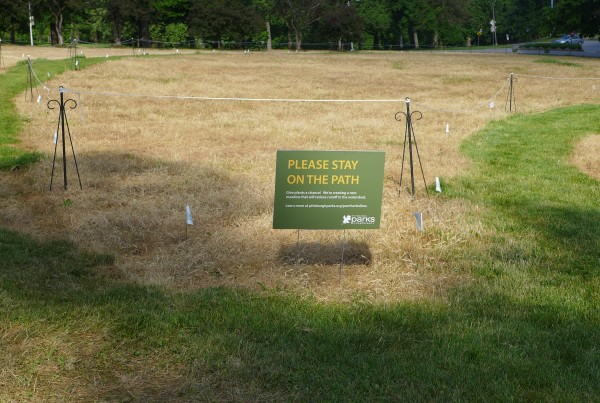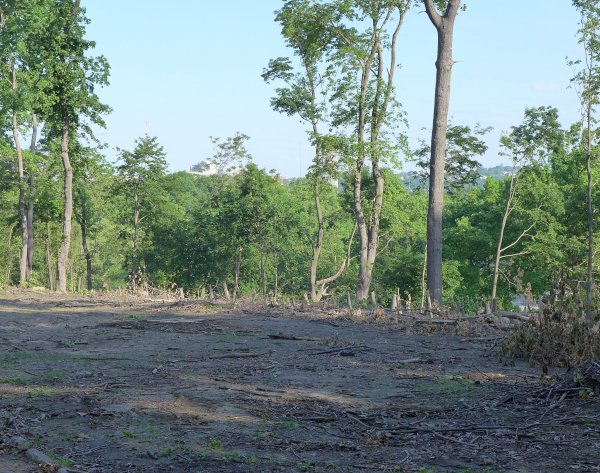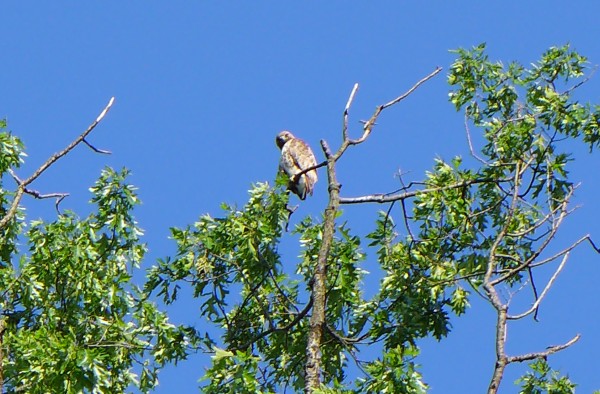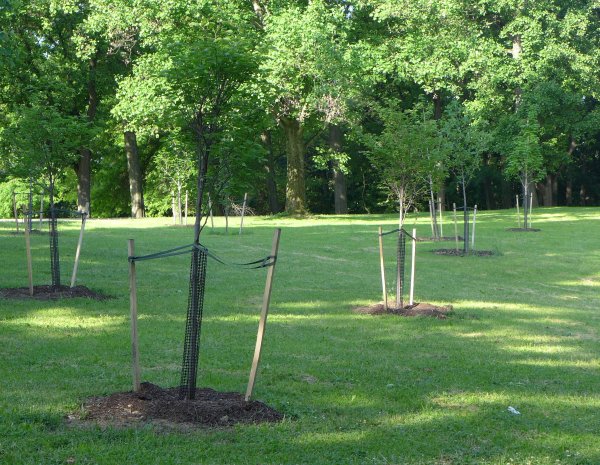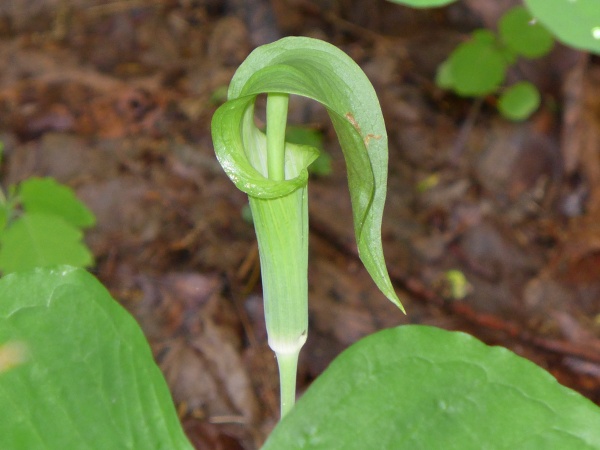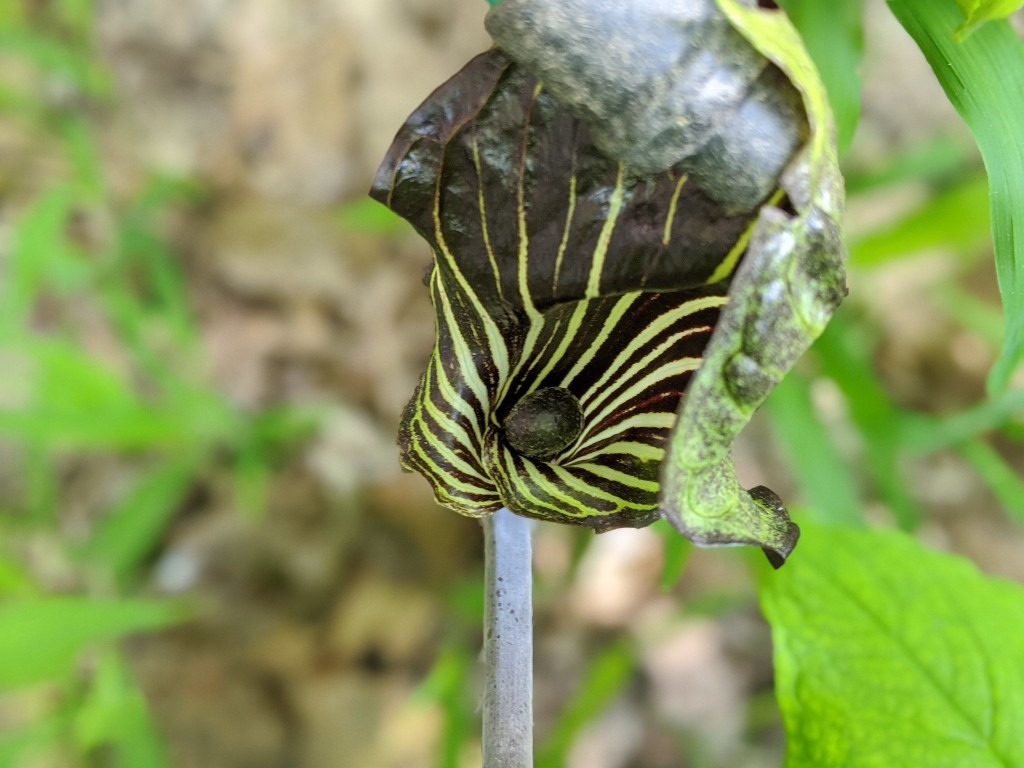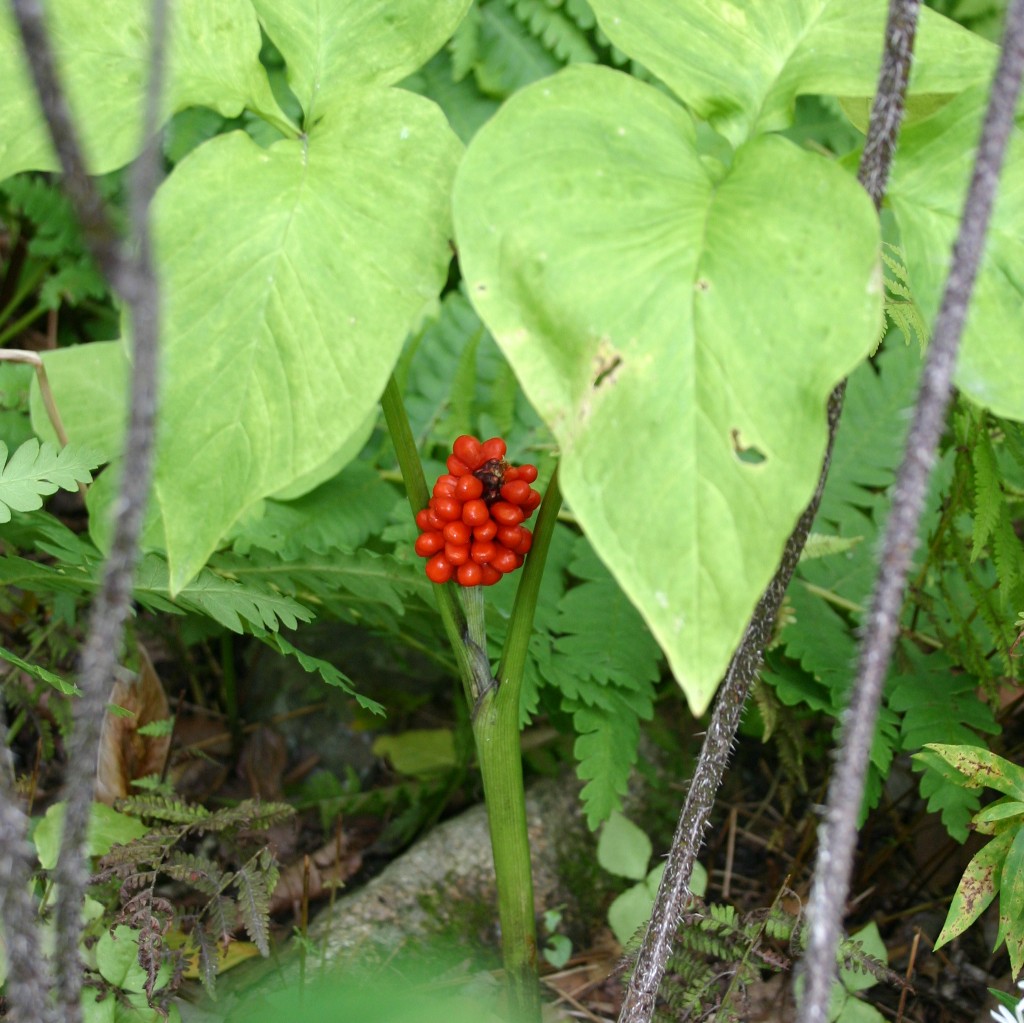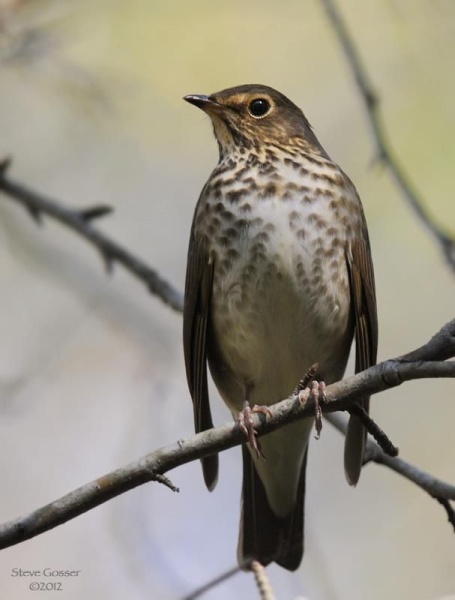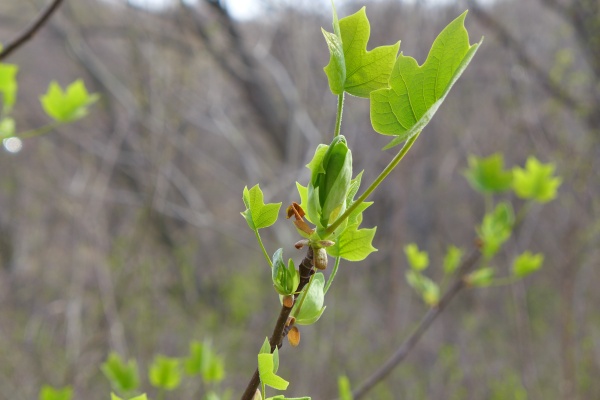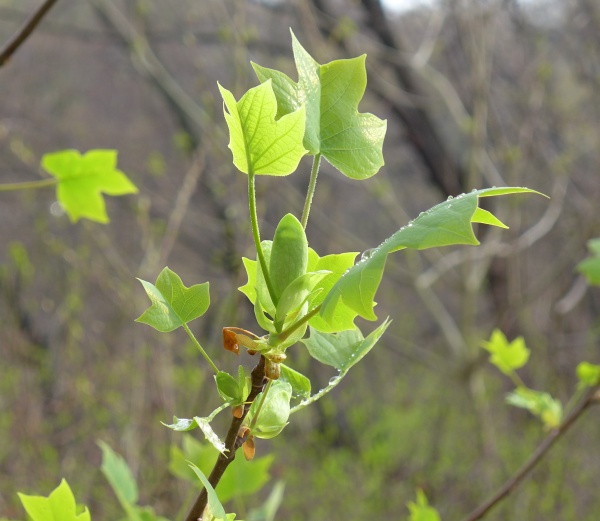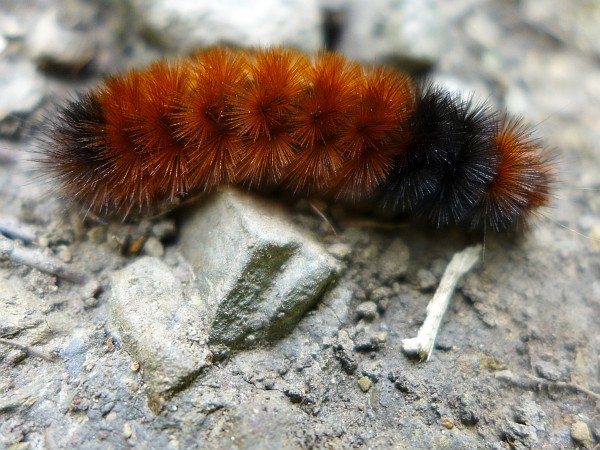
Yesterday I found this Isabella Tiger moth caterpillar in Schenley Park. Does she have a prediction for the coming winter?
Legend has it that wide brown stripes on woolly bear caterpillars predict a mild winter; narrow brown stripes mean a harsh one.
In the 1950’s the former curator of insects at the American Museum of Natural History surveyed a very small sample of woolly bears and found that the caterpillars had an 80% accuracy rate. However, no one’s been able to replicate Dr. C. H. Curran’s findings. Instead a whole host of factors influence the stripes including species, diet and age. Especially age. The older instars are browner.
And frankly, this caterpillar doesn’t care how harsh the winter. It can survive to -90 degrees Fahrenheit, hibernating as a caterpillar, curled up in a ball under a rock or bark. It freezes completely except for the innermost portions of its cells which are protected by naturally produced glycerol. In the spring the caterpillar thaws and resumes eating before making a cocoon and becoming a moth.
Theoretically this particular caterpillar is saying “mild winter” but we know it ain’t so.
Isabella scoffs at winter.
Read more here about the woolly bear legend and amazing winter feats.
(photo by Kate St. John)
